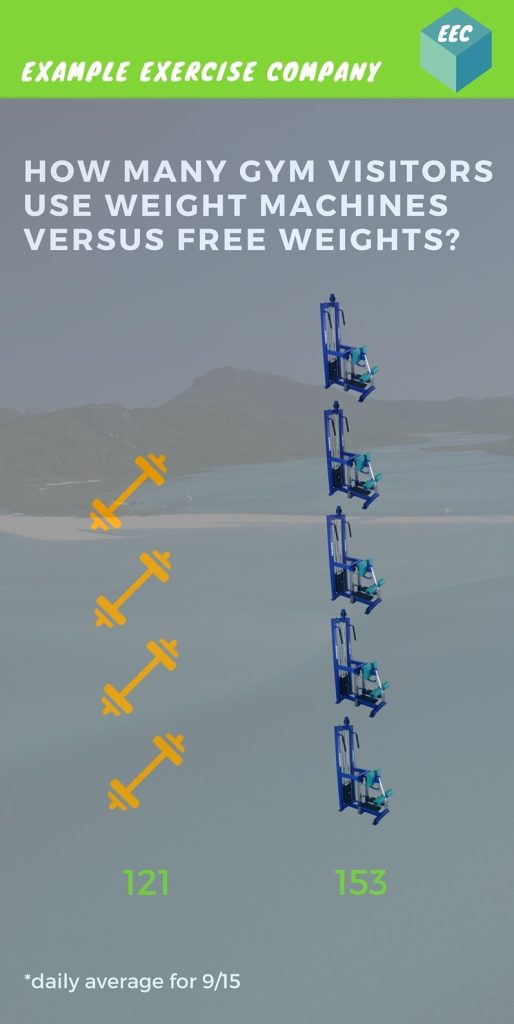 By now, you’ve probably seen plenty of colorful infographics displayed on social media or websites. These visual representations of data using charts, images, and diagrams have become wildly popular in recent years. Google Trends proves it. They’ve been measuring a strong, steady growth in infographics of over 800% since 2010! They are today’s darlings of online marketing, popping up in blog posts, white papers, case studies, landing pages, and emails.
By now, you’ve probably seen plenty of colorful infographics displayed on social media or websites. These visual representations of data using charts, images, and diagrams have become wildly popular in recent years. Google Trends proves it. They’ve been measuring a strong, steady growth in infographics of over 800% since 2010! They are today’s darlings of online marketing, popping up in blog posts, white papers, case studies, landing pages, and emails.
Why the interest? Simple — colorful images are more engaging than text, and they help us absorb facts and figures much faster (did you know that 90% of the information transmitted to the brain is visual, not verbal?). We humans are just instinctively drawn to them. And when we’re attracted to something, we want to share it, which makes an infographic a particularly powerful tool in this age of social media.
As with all types of visual marketing, though, there are good ways to present graphic data and bad ways. Follow these five guidelines to make sure infographics get your client’s marketing message out loud, clear, and broadly.
- Headlines Still Matter!
You or the graphics team may have just designed the world’s most persuasive infographic to send out in a marketing email. But, if the email has a weak subject line, chances are that your infographic won’t perform well simply because not enough readers will open the email to see it! The time-tested rules for writing good headlines and subject lines still apply to marketing pieces which contain infographics. That is, headlines and subject lines should be Unique, Ultra-specific, Useful, and convey a sense of Urgency.When it comes to writing the headline for an infographic itself, you have an advantage — headlines with numbers tend to perform better than those without. Since you usually include statistical information in these infographics, you can easily draw out a number for your headline, for example, “Why Women Eat 5 Times More Chocolate Than Men.”
- Infographics Are Stories
Infographics are really just written pieces translated into a visual format. And like any compelling written feature, an infographic should follow a storyline. Begin each project as you would an article, by creating an outline. Then organize the statistics and other data for each area of information you’re going to address. Infographics typically flow horizontally and include a series of separate sections — think of them as paragraphs — showing the most general information first and working down to more specific points. Always use sub-headlines at the beginning of each graphic to clarify the topic of that section.Let’s say you’re drafting an outline for an infographic analyzing travel during the average Thanksgiving long weekend. First, you’d probably want a general graphic showing how many people traveled in the U.S. during this particular weekend last year, comparing it to numbers from the few years before. The next graphic might be a breakdown of how many people traveled on each given day of the weekend, from Wednesday to Sunday. Further down, you could show how many people traveled respectively by air, car, train, or bus. Then you could cover average distance traveled, relative costs for travel, time spent traveling, average number of overnight stays, and so on.Although mine is a sort-of bland example, you can see how demonstrating this information in a colorful infographic can be so much more appealing (and probably more memorable) than a long text article full of statistics. As online marketers like to say, “A good infographic is worth a thousand words.”
- Simplicity and Focus
Maybe you’ve seen them: Infographics cluttered with numbers, text bites, clip art, kittens, arrows, pie charts. They may catch your eye at first, but once you start reading, you’re more confused than when you started. It’s like a big messy soup of data, and you just lost your appetite.Don’t let this happen! Keep readers scrolling down by designing each graphic to focus on one data set only. Use simple, relevant images and bold design. Pick one color scheme and use it throughout, so all the individual parts of the infographic hang together with a common look and feel.
- Be Original
You’ll go a long way to helping your client reach a bigger audience with infographics if you show data in creative — but simple! — ways. For example, instead of displaying a standard bar chart (boring), try using visuals that relate to the industry audience, like fitness icons if your client sells gym equipment to fitness studios. If you have a particularly compelling piece of information, you can draw attention to it by making it bigger and using an appropriate image.Highlight short quotable texts or fascinating facts by offsetting them in another color. In short, find original ways to convey your information, but always remember the sector you’re speaking to: use images and a tone they will relate to.
- Keep it Timely
The data you use for your infographic should be as fresh as possible and from reliable sources. If you are covering a technology-related topic, for instance, you’ll want to get your hands on studies that have been done at most within the last year, as the scene changes quickly. The newer and more convincing the study results in your infographic are, the more likely it is that visitors will read the material and share it with their online communities. And it’s a given, of course, that information sources as well as stock photos should always be properly attributed.When designed according to these rules, infographics can be one of the most persuasive marketing tools out there — they are visually striking and easy to share on social media. They are also versatile enough to be used in just about any kind of B2B marketing strategy. Short infographics can be added to customer emails, for example, or used to break up text in online brochures. Longer, more detailed ones can even take the place of a traditional, written blog post or case study. So get creative. Start thinking of ways to transform your next client project into a beautiful work of infographic art.